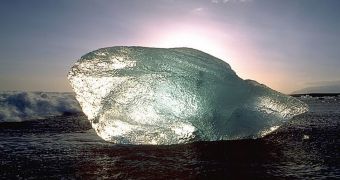A paper published in the February 27 early online issue of the esteemed journal Proceedings of the National Academy of Sciences (PNAS) argues that the warming Arctic will cause events such as extreme snowstorms and record-setting cold spells increasingly often.
In 2010, parts of the United States were hit by intense snowfall, so hard that people developed new names for the blizzards – Snowpocalyse and snowmageddon are just two of them. This winter, Europe was hit by record-setting cold weather, which lead to the deaths of hundreds of people.
Abnormal weather patterns such as these ones were recorded at numerous locations across the Northern Hemisphere, and researchers at the Georgia Institute of Technology (Georgia Tech) School of Earth and Atmospheric Sciences (SEAS) say that the situation will only get worse in time.
The reason why they feel confident making this prediction is that they found an intricate link connecting the amount of sea ice available in the Arctic during the winter and the likelihood of such extreme weather patterns occurring, LiveScience reports.
Since many people are not even willing to accept that global warming is real, and that it's driving Arctic ice melt, the chance of measures being taken to address this phenomenon anywhere in the near future is very remote. As such, the polar regions will most likely continue to warm.
In order to come to this conclusion, SEAS scientists used both observational data and computer models to derive localized climate patterns. “We conclude that the recent decline of Arctic sea ice has played a critical role in recent cold and snowy winters,” they write in the PNAS paper.
The team explains that changes affecting usual Arctic sea ice concentrations during the autumn leads to shifts occurring in the atmospheric conditions and increased moisture levels that are characteristic for this time of year in the Northern Hemisphere.
These modifications eventually lead to colder temperatures and increased amounts of snowfall over the majority of Europe, Asia and North America. Arctic sea ices are known to be declining steadily and steeply since satellite records started being kept in the 1970s.
“These pattern changes enhance blocking patterns that favor more frequent movement of cold air masses to middle and lower latitudes, leading to increased heavy snowfall in Europe, and the Northeast and Midwest regions of the United States,” senior researcher and lead paper author Jiping Liu explains.
He highlights the fact that the entire Arctic could eventually lose ice during summers, and only gain some of it back during winters. If this happens, then the frequency and intensity of extreme weather events will surely increase accordingly.

 14 DAY TRIAL //
14 DAY TRIAL //